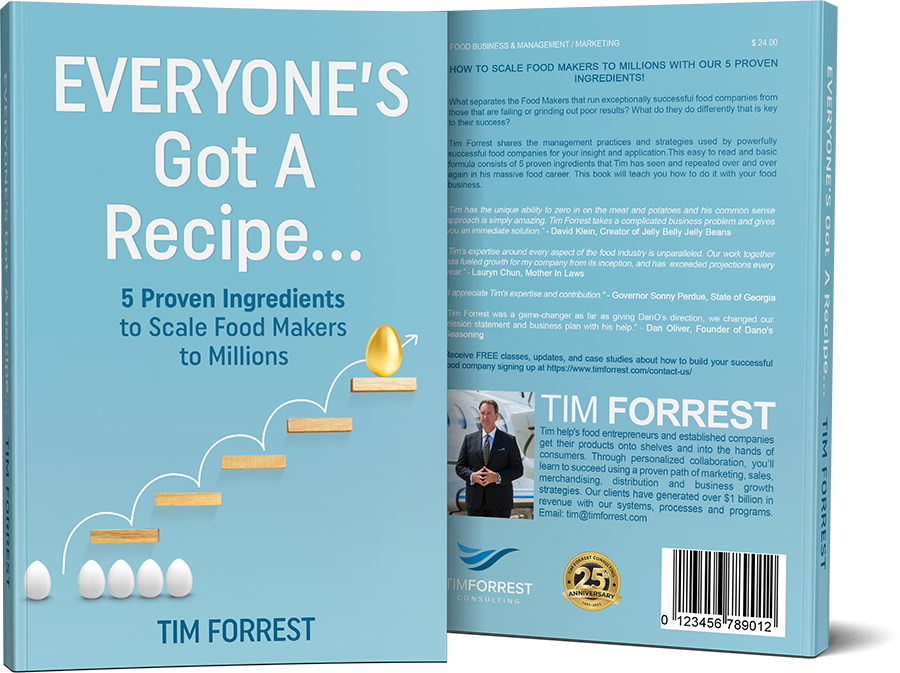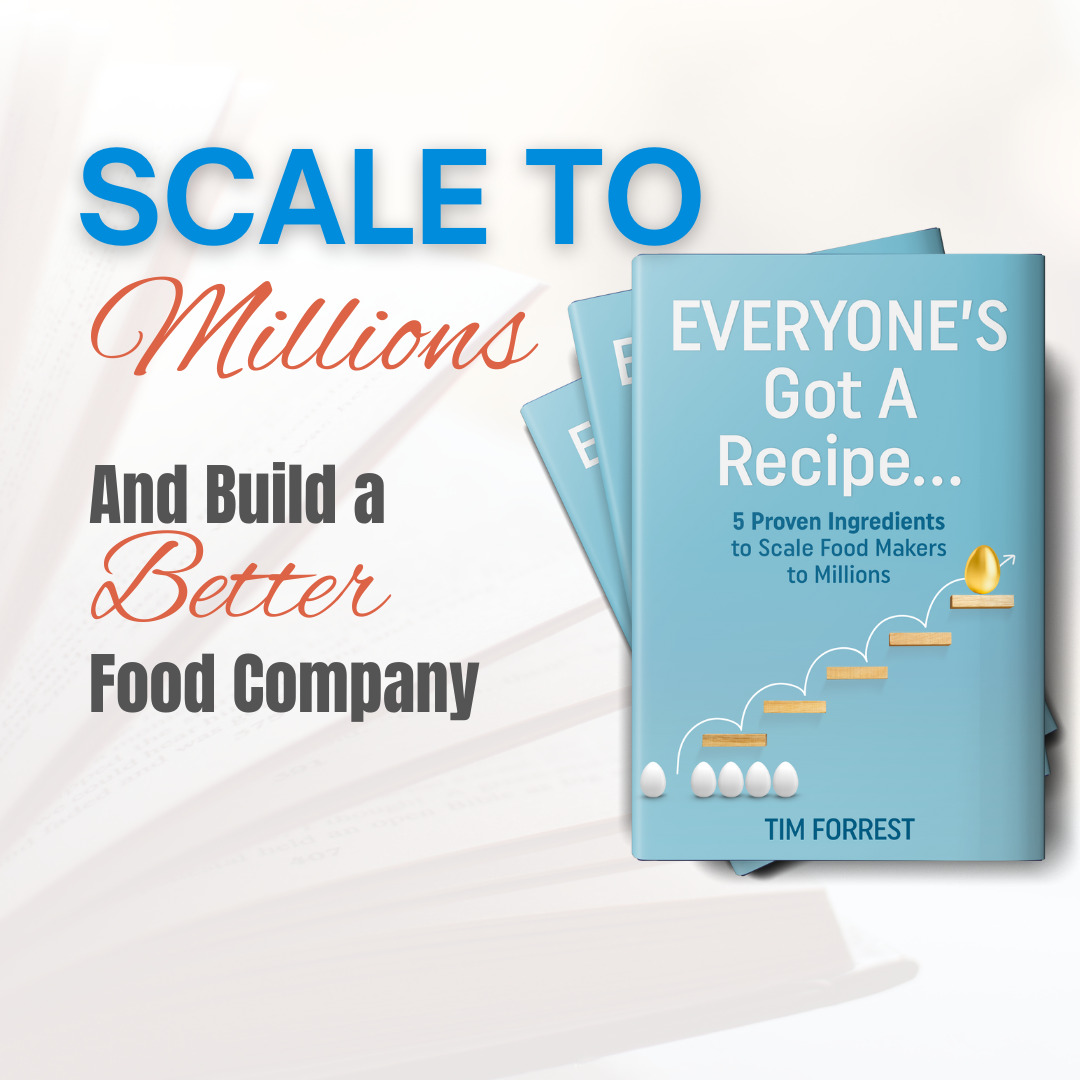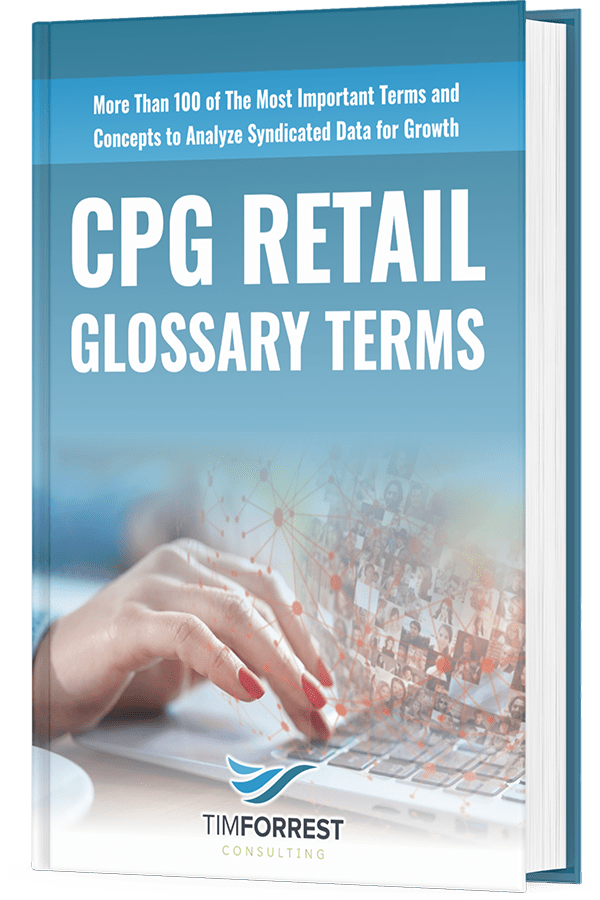The Comprehensive Guide to Growing Your Food Business in Uncertain Times
Introduction
In an era marked by economic volatility, companies in the food and consumer packaged goods (CPG) sectors might be tempted to deprioritize growth. However, research shows that growth is even more crucial during times of economic uncertainty. Companies that focus on growth during downturns not only survive but thrive when the economy rebounds.
This exhaustive report aims to provide food business owners with actionable insights into various avenues for growth. We’ll delve into 13 key methods, each accompanied by practical actions and suggestions. Whether you’re a startup looking to disrupt the market or an established brand aiming to expand, this guide offers a multi-faceted approach to growth that can significantly enhance shareholder returns.
The 13 Pillars of Growth
1. Consumers
Description
Understanding consumer behavior, preferences, and needs is the cornerstone of any successful business strategy.
Actions
- Where They Shop: Identify the channels where your target consumers are most active.
- Language & Values: Listen to customer reviews and social media comments to understand their language and values.
- Packaging & Media: Design your packaging and advertising to appeal specifically to your target segment.
Example: Plant-Based Foods
Companies like Beyond Meat have successfully tapped into consumer demand for plant-based alternatives. By understanding where these consumers shop and what values they hold, Beyond Meat has positioned its products in both grocery stores and fast-food chains, appealing to convenience and health-consciousness.
2. Categories
Description
Identifying high-growth and high-margin categories within the food industry can offer lucrative opportunities.
Actions
- Gap Analysis: Review existing categories to identify gaps that your product can fill.
- Partnerships: Partner with retailers or distributors who lack offerings in your category.
- Category Review: Understand your current market position and explore adjacent categories for expansion.
Example: Gluten-Free Products
Brands like Udi’s identified a gap in the gluten-free bread market and filled it successfully. They partnered with health-focused stores and expanded into adjacent categories like gluten-free pastries.
3. Competitors
Description
A keen understanding of competitor strategies and market positioning can help you carve out your unique selling proposition.
Actions
- Value Proposition: Offer something that your competitors don’t.
- Strengths: Leverage your unique strengths to stand out.
Example: Coca-Cola vs. Pepsi
Coca-Cola focuses on the emotional experience of consuming their product, while Pepsi often targets younger audiences with a focus on music and entertainment. Both have carved out unique market positions.
4. Cities
Description
Expanding into new cities, regions, or even countries can offer new market opportunities.
Actions
- Market Research: Use census data to identify promising new markets.
- Regional Focus: Start with cities or regions adjacent to your current markets to test the waters.
Example: Starbucks in China
Starbucks successfully entered the Chinese market by adapting its offerings to local tastes, such as introducing green tea lattes.
5. Capabilities
Description
Assessing your internal skills, technology, and resources can help you identify what you can do best.
Actions
- Manufacturing Strengths: Leverage your manufacturing capabilities to enter markets where you have a competitive edge.
- Channel Success: Identify which distribution channels have been most profitable for you.
Example: Nestlé’s Use of Blockchain
Nestlé leveraged its technological capabilities to implement blockchain for better food transparency, appealing to the modern, health-conscious consumer.
6. Channels
Description
Your choice of distribution channels can make or break your growth strategy.
Actions
- Channel Identification: Think of success in terms of channels, not just customers.
- Channel Players: Understand who the key players are in each channel.
Example: Direct-to-Consumer Brands
Brands like HelloFresh bypass traditional retail channels to deliver directly to consumers, thereby increasing their profit margins.
7. Content
Description
Quality content can attract and retain customers.
Actions
- Content Strategy: Develop a content strategy that offers value to your consumers.
- Guides and Recipes: Create how-to guides, recipes, or even cooking classes that can help your consumers get the most out of your products.
Example: McCormick’s FlavorPrint
McCormick uses its FlavorPrint website to offer personalized recipes, thereby driving both engagement and sales.
8. Collaborations
Description
Collaborations can open up new avenues for growth.
Actions
- Strategic Partnerships: Partner with brands or influencers who align with your target market.
- Leverage Other Areas: When collaborating, consider how you can also leverage other growth pillars like cities and consumer avatars.
Example: Doritos and Taco Bell
The Doritos Locos Tacos collaboration was a win-win, creating a new revenue stream for both brands.
9. Community
Description
A strong community can serve as brand advocates and offer valuable feedback.
Actions
- Swag and Merchandise: Offer branded merchandise to turn customers into walking advertisements.
- Events and Forums: Host community events or online forums where customers can share recipes and tips.
Example: Ben & Jerry’s Activism
Ben & Jerry’s has built a strong community around social activism, which aligns with their brand values.
10. Culture
Description
Aligning your brand with cultural trends or social movements can make your product more appealing to certain consumer segments.
Actions
- Cultural Alignment: Identify cultural trends that align with your product.
- Social Movements: If applicable, align your brand with social movements that resonate with your target market.
Example: Fair Trade Coffee
Brands like Starbucks have successfully aligned themselves with the fair trade movement, appealing to socially-conscious consumers.
11. Customization
Description
Personalization can make your product more appealing to different consumer segments.
Actions
- Product Customization: Offer personalized versions of your product.
- Consumer Segmentation: Use data analytics to segment your consumer base and offer targeted products.
Example: Coca-Cola’s “Share a Coke” Campaign
Coca-Cola’s personalized bottles allowed consumers to find bottles with their names, making the product more appealing.
12. Convenience
Description
The easier your product is to purchase and consume, the more likely consumers will choose it.
Actions
- Product Formats: Offer your product in various formats like single-serve or family packs.
- Ease of Purchase: Make your product available online and in stores where your consumers frequently shop.
Example: Single-Serve Snack Packs
Brands like Lay’s offer single-serve packs for on-the-go consumers, thereby increasing purchase occasions.
13. Cost-Efficiency
Description
Optimizing costs can allow you to offer competitive pricing or increase your profit margins.
Actions
- Bulk Sizes: Offer your product in larger sizes or bulk to appeal to price-sensitive consumers.
- Distribution Efficiency: Consider direct-to-store models to cut down on distribution costs.
Example: Costco’s Kirkland Brand
Kirkland offers quality products at competitive prices by optimizing the supply chain and offering products in bulk.
Conclusion
Growth is not just a strategy for good times; it’s a mantra for survival and long-term success, especially in uncertain economic climates. Companies that prioritize growth across multiple dimensions—be it consumers, categories, competitors, or any of the other pillars discussed—stand to gain a competitive edge that pays dividends in the long run.
In our experience, companies that adopt a growth-oriented operating model, leveraging analytics and a multi-lens approach, deliver significantly greater total shareholder returns than their peers. The accretive growers, on average, delivered 13.9 percent total shareholder returns, compared to only 6.2 percent for their peers that merely expanded margins without growing revenue ahead of the market.
DIY Tips for Immediate Action
- Consumer Surveys: Use simple online tools to create consumer surveys and gather insights about preferences and behaviors.
- Competitor Analysis: Spend a day analyzing your competitors’ online presence. What are they doing right? What can you do better?
- Content Calendar: Create a simple content calendar for the next month. Plan out what types of content you’ll create and when you’ll post it.
- Community Engagement: Start small by creating a Facebook group or forum where your consumers can share tips, recipes, and other ideas related to your product.
- Cost-Efficiency Audit: Review your expenses and identify areas where you can cut costs without compromising quality.
Final Thoughts
The food and CPG industries are rife with opportunities for those willing to look. Whether you’re a small startup or a well-established brand, the 13 pillars of growth offer a comprehensive roadmap for navigating the complexities of the market, especially during challenging economic times.
By adopting a multi-faceted approach to growth that leverages consumer insights, competitive analysis, and advanced analytics, companies can not only survive but thrive in today’s ever-changing landscape. So, take the time to review these pillars, apply them to your business model, and prepare to watch your business grow.
About the Author
Tim Forrest is an expert growth consultant with a rich legacy at Nestle and Unilever in strategic roles. Specializing in food strategy consultancy, Tim has helped clients raise over $20M and achieve $1B in growth. Transforming food brands with innovative strategies, client successes have been featured in Random House books, the Food Network, and the Wall Street Journal.
By implementing these strategies, you’re not just setting your business up for incremental growth; you’re laying the foundation for exponential success. Happy growing!
For more insights and tailored consultancy services, visit www.timforrest.com, send an email [email protected] or book an appointment at www.timforrestmarkets.com.
 “Hi I’m Tim, and I love the food business! I’ve been helping large and small companies and entrepreneurs achieve success for decades. My consulting projects have contributed to major successes for my clients, including many with 100%+ year-over-year growth rates. I enjoy sharing my expertise, and hope you find these blog posts enlightening. Please reach out to me with any questions or comments.”
“Hi I’m Tim, and I love the food business! I’ve been helping large and small companies and entrepreneurs achieve success for decades. My consulting projects have contributed to major successes for my clients, including many with 100%+ year-over-year growth rates. I enjoy sharing my expertise, and hope you find these blog posts enlightening. Please reach out to me with any questions or comments.”



















 We help food entrepreneurs and established companies get their products onto shelves and into the hands of consumers. Through personalized collaboration, you’ll learn to succeed using a proven path of marketing, sales, merchandising, distribution and business growth strategies. We’ve generated over $1 billion in revenue and company valuations for our clients. Let us put our expertise to work for you.
We help food entrepreneurs and established companies get their products onto shelves and into the hands of consumers. Through personalized collaboration, you’ll learn to succeed using a proven path of marketing, sales, merchandising, distribution and business growth strategies. We’ve generated over $1 billion in revenue and company valuations for our clients. Let us put our expertise to work for you.





